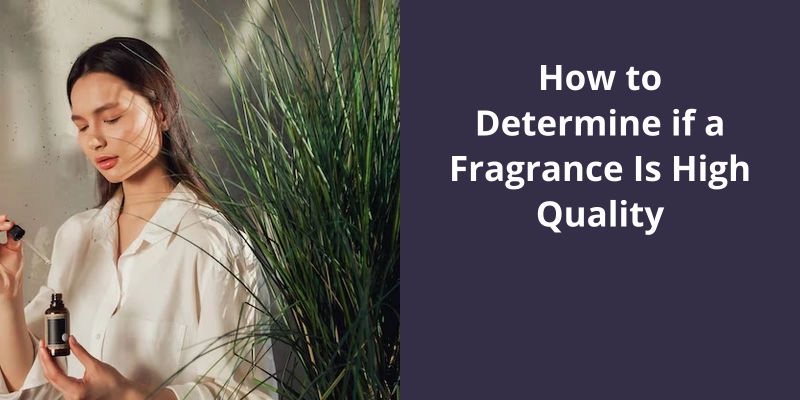This is a common question when faced with a perfume stain on clothing or other fabric materials such as cotton, linen, nylon, spandex, or wool. When dealing with a perfume stain, it’s important to approach the removal process carefully and with the right techniques. Instead of rubbing the stain, which can further set it in, it’s recommended to use a dampened sponge or cloth to pat at the stain. However, the effectiveness of removing perfume stains may vary depending on the type of fabric and the specific perfume used.

Do Perfume Stains Come Out in the Wash?
Perfume stains are generally easy to remove from fabrics, including polyester, through a simple machine wash. The majority of perfumes available on the market are diluted with alcohol, which allows them to evaporate quickly and not leave behind a stubborn stain. When exposed to water and detergent during the wash cycle, these diluted perfumes are usually lifted off the fabric fibers and washed away effectively.
If you’re concerned about the stain or prefer a professional touch, taking the garment to a dry cleaner can ensure a deep and thorough cleaning. They’re experienced in dealing with various types of stains and can provide the best treatment to restore the garments appearance.
Promptly blotting the affected area with a clean cloth or paper towel can help absorb excess perfume and prevent it from spreading further.
How to Remove Perfume Stains From Delicate Fabrics Like Silk or Chiffon
When dealing with delicate fabrics like silk or chiffon, it’s important to be cautious when attempting to remove perfume stains. Here’s a gentle method to try:
- Start by blotting the stained area with a clean cloth or paper towel to absorb any excess perfume.
- Next, sprinkle a small amount of baking soda or cornstarch onto the stain and let it sit for about 15-20 minutes. These absorbent powders can help to lift the perfume oils from the fabric.
- Gently brush off the baking soda or cornstarch using a soft-bristled brush or toothbrush. Be careful not to scrub too hard, as it may damage the delicate fibers.
- If the stain still persists, mix a solution of one part mild liquid detergent with two parts lukewarm water. Gently dab the stained area with this solution using a clean cloth.
- Rinse the fabric thoroughly with cool water to remove any residue.
- Finally, air dry the fabric flat or hang it up to dry, avoiding direct sunlight or heat sources that can cause further damage.
Remember, it’s always a good idea to test any cleaning method on a small, inconspicuous area of the fabric before treating the entire stain to ensure it won’t cause any discoloration or damage.
Not only do fabrics like silk or cashmere absorb more oil, but they also have a natural ability to retain fragrances for longer periods of time. Choosing to apply perfume on accessories such as scarves or ties can offer a lasting and subtle scent throughout the day.
What Material Holds Perfume the Longest?
Perfumes generally last longer on fabrics like silk or cashmere because they absorb more oil than other materials. When sprayed onto these fabrics, the scent molecules have a better chance of clinging on for an extended period. So, if youre looking for an enduring fragrance experience, consider spritzing some perfume onto a piece of clothing made from silk or cashmere.
Polyester, on the other hand, is a synthetic fabric that doesn’t absorb liquids or oils as easily as natural fibers. This means that perfumes may not stick around for as long when applied directly to polyester garments. Instead, the scent might evaporate quickly, leaving behind only a faint trace.
If you want a light scent that lasts all day, try spraying some perfume on a scarf or tie made from silk or cashmere. While polyester may not hold perfume as well as natural fibers, the actual longevity also depends on the composition and concentration of the fragrance, so experiments may be necessary to find the perfect combination between perfume and fabric.
The Science Behind Scent Absorption Exploring the Chemical Properties of Silk, Cashmere, and Polyester That Make Them More or Less Absorbent of Perfume Molecules.
Perfume and other scents can interact differently with different fabrics. This is due to the varying chemical properties of the fabrics themselves.
Silk, for example, is known for it’s ability to absorb and retain scents for a longer time compared to other fabrics. It’s natural fibers have a structure that allows them to hold onto perfume molecules, resulting in a lingering fragrance.
Cashmere, another natural fiber, is also known for it’s scent-absorbing properties. The fine and soft fibers of cashmere can trap perfume molecules effectively, enhancing the longevity of the fragrance.
On the other hand, polyester, a synthetic fabric, tends to be less absorbent of scents. The chemical composition of polyester makes it less capable of holding onto perfume molecules, resulting in a shorter-lasting fragrance when applied to this fabric.
Understanding the science behind scent absorption in different fabrics can help you choose the right material if you want your perfume to last longer on your clothing.
These fabrics have a better ability to retain and release the scent molecules, allowing your perfume to last longer and be more noticeable.
What Fabric Holds Perfume Best?
Perfume enthusiasts often seek ways to enhance the longevity and intensity of their favorite scents. One method that’s commonly employed is applying perfume on clothing to further amplify the fragrant trail one leaves behind. However, not all fabrics are created equal in terms of holding perfume. When it comes to finding the best fabric to retain the scent, natural materials such as cotton, cashmere, silk, wool, and linen have proven to be the frontrunners.
Cotton, with it’s breathable and absorbent nature, is a popular choice for perfume application. It not only holds the fragrance well but also allows it to slowly diffuse over time. Cashmere, known for it’s luxurious softness, also acts as an excellent vessel for perfume. It’s delicate fibers have the ability to retain the scent for longer periods, creating a gentle and long-lasting sillage.
Silk, renowned for it’s smooth and lustrous qualities, is another fabric that holds perfume exceptionally well. The natural protein fibers in silk possess great absorbency, allowing the fragrance molecules to firmly bond and linger on the fabric. Wool, with it’s dense and resilient texture, can also effectively retain perfume due to it’s strong fiber structure and high moisture absorption capacity.
Lastly, linen, the fabric made from flax fibers, has been cherished for centuries for it’s lightweight and breathable characteristics. Linen has the unique ability to hold perfume due to it’s porous nature, allowing the scent to subtly envelop the wearer throughout the day.
How to Properly Apply Perfume to Fabric for Long-Lasting Scent.
Applying perfume to polyester fabric requires a different technique compared to other materials. To ensure a long-lasting scent, you can follow these steps:
- Choose the right perfume: Opt for long-lasting perfumes or ones specifically designed for fabric.
- Dilute the perfume: Mix the perfume with water in a spray bottle to prevent it from staining or damaging the fabric.
- Mist the fabric: Hold the spray bottle a few inches away from the polyester fabric and lightly mist it. Avoid saturating the fabric.
- Allow it to dry: Give the fabric ample time to dry and let the perfume molecules adhere to the fibers.
- Reapply as needed: If the scent fades, you can repeat the process by lightly misting the fabric again.
By following these steps, you can enjoy the fragrance of your perfume on polyester fabric for an extended period.
Conclusion
Whether you’re dealing with a perfume stain on cotton, linen, nylon, polyester, spandex or wool, avoiding vigorous rubbing and opting for gentle dabbing and patting movements is key.





